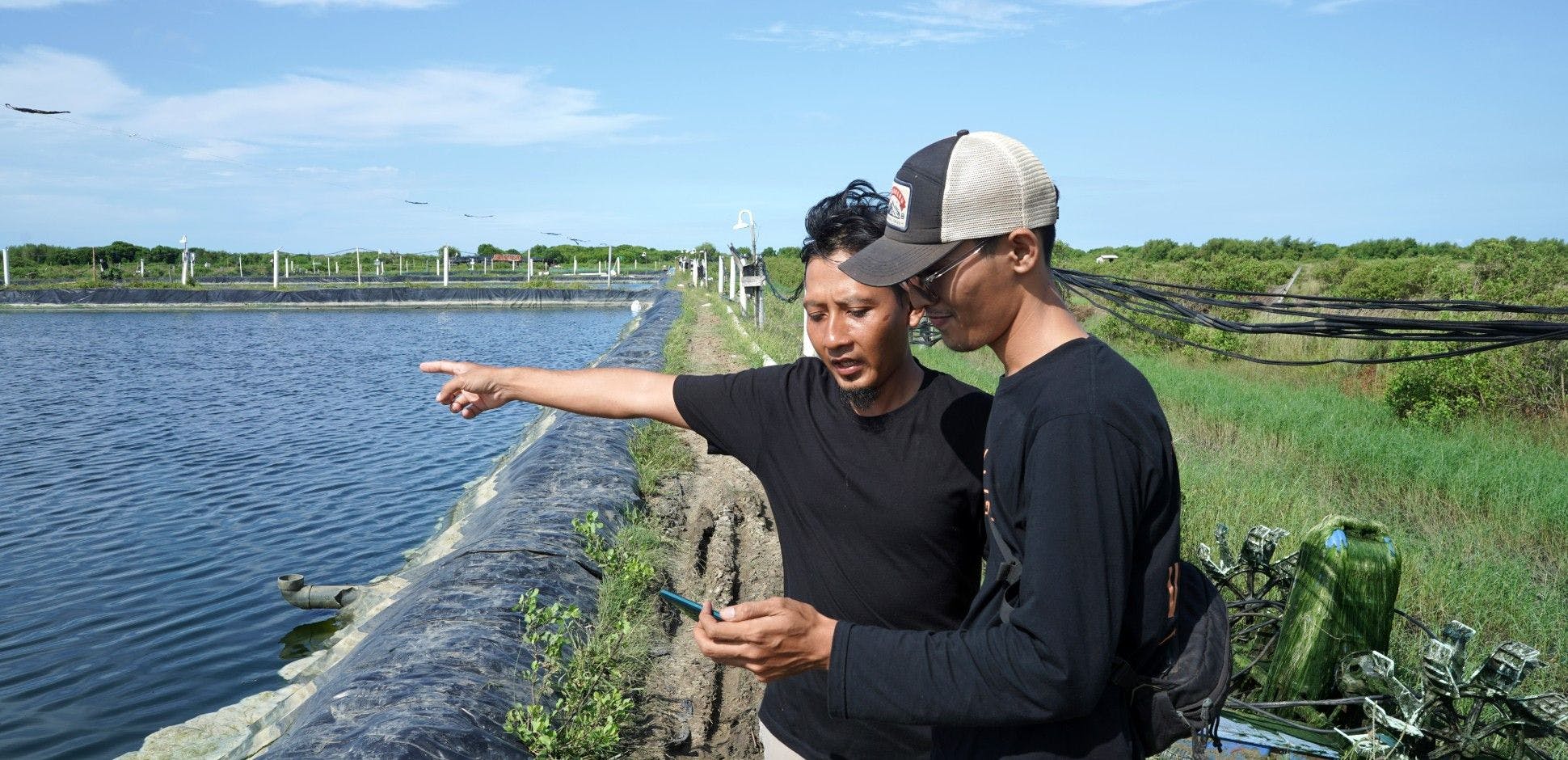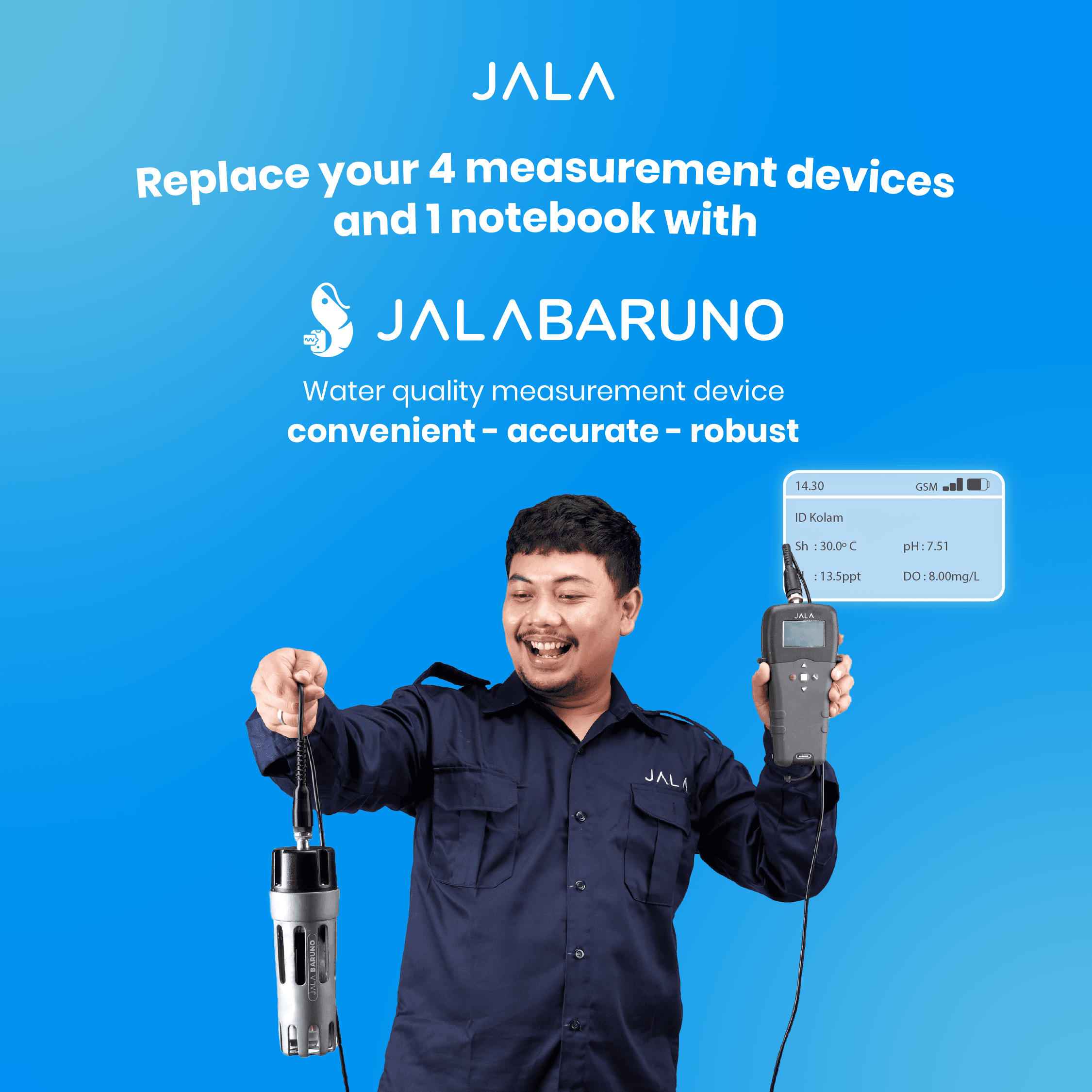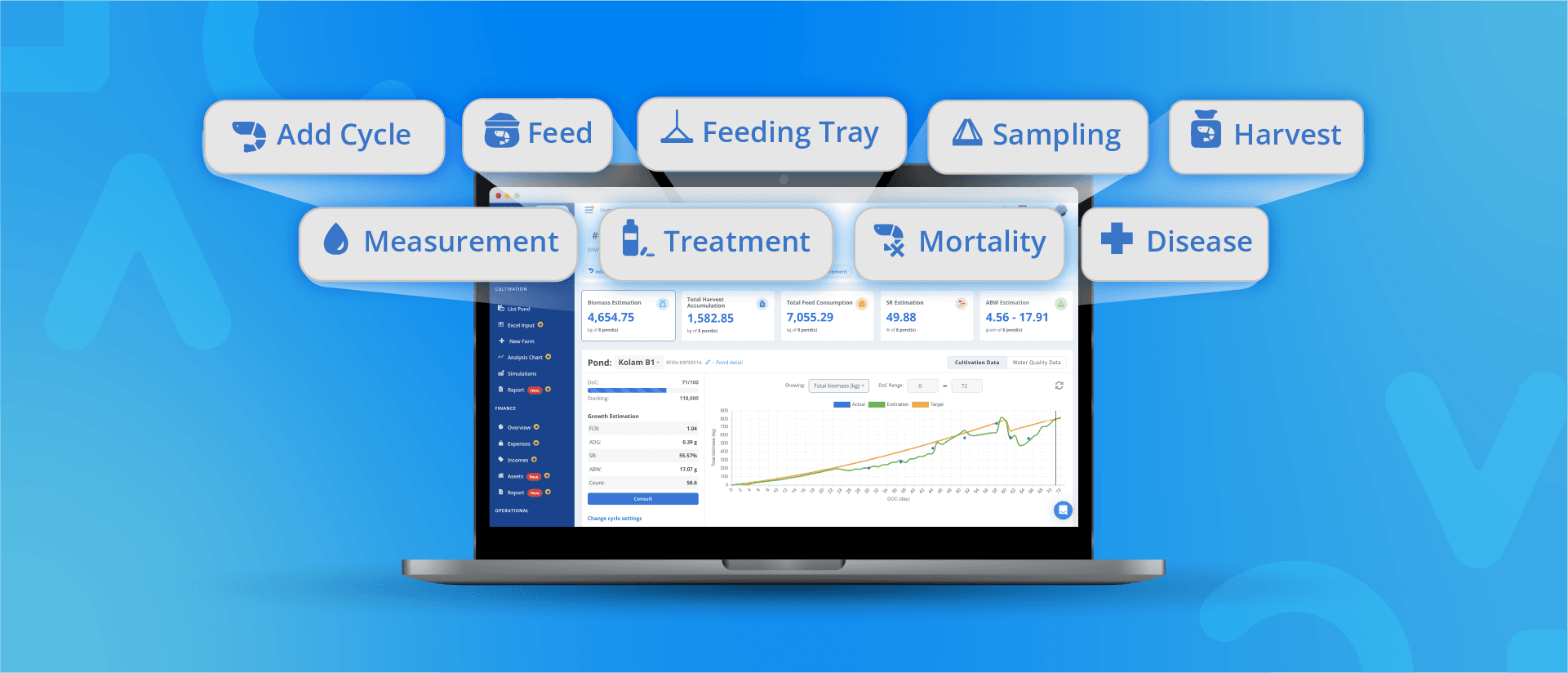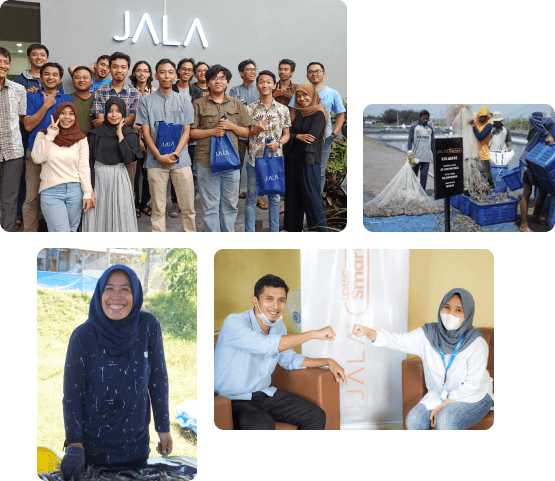
Shrimp remains one of the main fishery commodities in Indonesia. In 2021, Indonesia’s shrimp production reached 1.21 million tonnes. The methods in shrimp cultivation have also developed from time to time, from traditional to intensive methods, with the goal of increasing cultivation production. What are the different shrimp cultivation method trends in Indonesia?
Different methods depending on cultivation type
Traditional cultivation is the oldest cultivation type, in which the shrimp fry is sourced from nature. Thus, the supply is highly uncertain as it relies on natural factors such as seasons and weathers. The stocking density of traditional cultivations is also extremely low, only around 8 shrimp /m², with limited facilities.
The next cultivation type is semi-intensive cultivation. This cultivation involves more facilities such as pumps and windmills to manage water flow in the farm, as well as an inlet and outlet for water exchange, pond preparation, and harvesting facilities. The stocking density in semi-intensive farms is also higher, around 70 shrimp/m².
For an even higher farm productivity, farmers need to do intensive cultivation. This type of cultivation involves growing shrimps in hatcheries with a high stocking density of around 110 shrimp/m². Moreover, the feed is usually formulated to support shrimp growth. Intensive farms also have more aeration facilities such as windmills, blowers, pumps, and intensive water management facilities.
Technological involvement in each cultivation type
From the differences elaborated above, each cultivation has different levels of technological involvement. Traditional cultivations involve little to no technology, as they highly rely on the environment. For semi-intensive cultivations, there is slightly more technological involvement such as the use of windmills and feed recording applications. Moving to intensive and super-intensive farms, the technology used includes windmills to supply sufficient DO, data recording app to record feed, water quality, and other parameters. Some farms also use autofeeders for more efficient feeding.
Trends in water quality measurement technology
Water quality is a crucial aspect in shrimp cultivation. Regular water quality measurements ensure that water quality is well-maintained. Some of the most important parameters to measure are temperature, pH, DO, and salinity.
Afterwards, there was a shift towards manual measurement devices which only measure a single parameter, for example, pH meters are used to measure pH, refractometers for salinity, and thermometers for temperature. However, as technology advances, there are multi-parameter measurement devices which accommodate the measurement of many parameters at once. This is beneficial for farmers as they can save time and cost for monitoring water quality.
 One of the reliable multi-parameter devices that farmers can use is JALA Baruno. It is more convenient as it enables farmers to measure temperature, pH, DO, and salinity altogether. Moreover, the measured data is integrated with JALA App, enabling farmers to access the data anytime and anywhere.
One of the reliable multi-parameter devices that farmers can use is JALA Baruno. It is more convenient as it enables farmers to measure temperature, pH, DO, and salinity altogether. Moreover, the measured data is integrated with JALA App, enabling farmers to access the data anytime and anywhere.
Trends in feeding technology
In shrimp cultivation, feeding is another aspect farmers cannot overlook. Aside from supporting shrimp growth, feeding also takes up the biggest operational cost, 50-70% of the total cost per cycle. Unfortunately, most of the feed is not eaten by shrimp. This leftover feed accumulates at the bottom of the pond and causes plankton blooms.
Feeding methods can be categorized as manual feeding or using autofeeders. With manual feeding, feed is spread without any tools. This method is inefficient as not all the feed will be eaten, and requires a large amount of labor.
Thus, the autofeeder technology is developed to optimize feeding processes. Autofeeders allow automatic feeding in which farmers can set the amount, distance, and frequency they want, increasing feed efficiency.
Read more: High-Quality Feed for Shrimp Growth
Trends in cultivation data recording technology
In shrimp cultivations, particularly semi-intensive and intensive farms, there are many important data such as feed, water quality, shrimp growth, and treatments that can be collected and interpreted into important insights. Regular data recording, allows better documentation and helps with making decisions for cultivations. Data recording also allows easier comparison of cultivation conditions between cycles, ponds, and farms.
Farmers often use a logbook to record data manually. More technologically savvy farmers may also use digital media such as Microsoft Excel or other recording applications.
 To give greater convenience for farmers in data recording, JALA has launched JALA App to record and monitor cultivation progress in real time. JALA App can be accessed through the web or mobile, helping farmers record their cultivation data with over 40 parameters available. Not only that, data measured using JALA Baruno can be sent to the app, allowing farmers to view it anytime and anywhere.
To give greater convenience for farmers in data recording, JALA has launched JALA App to record and monitor cultivation progress in real time. JALA App can be accessed through the web or mobile, helping farmers record their cultivation data with over 40 parameters available. Not only that, data measured using JALA Baruno can be sent to the app, allowing farmers to view it anytime and anywhere.
Looking at the different cultivation methods to choose from, farmers should pick the one that best matches their production target and also consider their cost. Throughout cultivation, regularly measuring and recording data is essential to help farmers understand their farm conditions and make the best decision.





